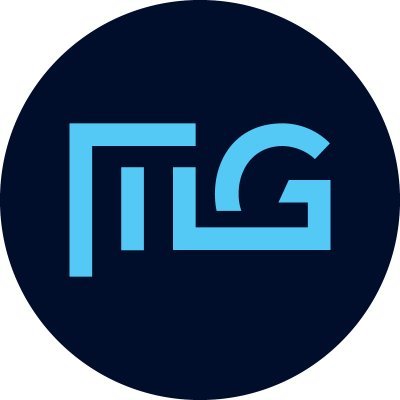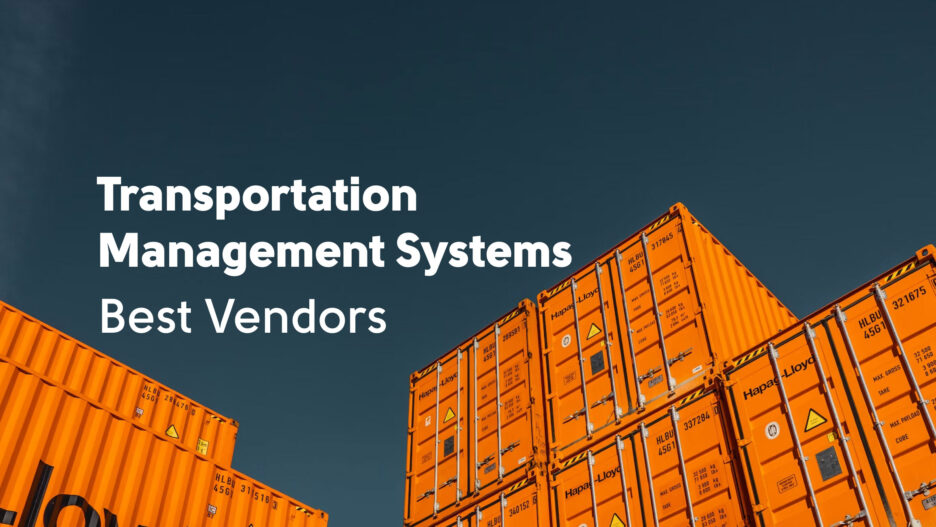Despite the current economic crisis, the market for transportation management systems (TMS) is still growing around the world. If you’ve kept an eye on recent major events, you’ll know transportation is now an even more important part of the supply chain, which means that transportation technology is also needed more.
For example, Gartner predicts the global transportation management system market to grow 60% from $1.3 billion in 2019 to $2.1 billion in 2024. Other research estimates the market for cloud-based TMS technologies will grow at a CAGR of 16.2% up until 2025.
So, what is a transportation management system, actually? We’re glad you asked!
What is a Transportation Management System?
A Transportation Management System or TMS is a computer program that facilitates the smooth and efficient transportation of goods by land, air, sea, or any combination thereof for businesses and other organizations. By optimizing loads and delivery routes, tracking freight across local and global routes, and automating previously time-consuming tasks like trade compliance documentation and freight billing, TMS software helps ensure the timely delivery of goods as part of the larger supply chain management system.
The Role of Transportation Management Systems Software in the ERP Process
A TMS system works with other software as part of a larger system for managing the supply chain. Most Enterprise Resource Planning (ERP) and warehouse management system (WMS) integrations are available.
Each of the software systems below has a specific job to do. When they all work together, they make a digital tripod that helps deliver the whole process.
- ERP takes care of accounting, managing orders, and sending out bills.
- WMS helps with tasks like palletizing, fulfilling orders, shipping and receiving, and keeping track of inventory.
- TMS is in charge of managing freight and figuring out the best routes and carriers.
ERP systems can be the best solution for all of your transportation operations, no matter how big or small your fleet is. They can help you avoid high overhead costs, unexpected break-fix situations, and sudden downtime. Forrester Research says that using a transportation management system will save you an average of 8% per year on transportation costs by finding how to combine loads, automate repetitive tasks, choose the best route, carrier, and mode, and find other ways to save money.
With TMS and ERP, you can predict the volume and demand of shipments, improve freight management, maximize your ROI, gain advanced and real-time visibility of all your shipping (domestic and international), and more.
The Functionality of a Transportation Management System
Transportation management systems handle four of the most important parts of managing transportation:
- Planning and making decisions: TMS will figure out the best way to move people and goods based on given parameters, which have different levels of importance depending on the user policy: Cost of transport, lead time, the number of stops that can be made to ensure quality, the flows regrouping coefficient, etc.
- Transportation Execution: TMS will allow for the execution of the transportation plan such as carrier rate acceptance, carrier dispatching, and EDI.
- Transport follow-up: TMS will make it possible to track any physical or administrative operation related to transportation. This includes tracing transport event by event (shipping from A, arrival at B, customs clearance, etc.), editing reception, customs clearance details, invoicing, and booking documents, and transport alerts (delay, accident, non-forecast stops, etc.)
Some of the many things a TMS does:
- Planning and maximizing rounds for land transport
- Inbound and outbound mode of transport and choice of a transport provider
- Transportation management for cars, trains, planes, and ships
- Real-time tracking of transportation
- KPIs to keep track of service quality (see below)
- Load optimization and route optimization
- Costs of transportation and a model of the plan
- Orders shipped in groups
- Freight negotiation
- Keeping track of costs, reporting on KPIs (key performance indicators), and keeping statistics
- Freight audits
Some examples of KPIs:
- % of On-Time Performance for Pick Up or Delivery Compared to Requested
- Cost per mile, kilometer, pound, cube, or pallet
- In terms of money, productivity is measured by things like cost per unit weight or shipping unit.
- Productivity in terms of operations, such as shipping units per order or weight per load
Top 7 Best Vendors of Transportation Management Systems
Despite the current tumultuous social, political, and economic crises, the market for transportation management systems is still growing around the world. Transportation is now an even more important part of the supply chain, which means that technology is needed even more.
As a starting point, we used the Gartner Magic Quadrant for Transportation Management Systems to list some of the most prominent players in supply chain technology to see how big, varied, and robust the TMS market is. Gartner uses a specific set of parameters for category weighting such as size, investment, tech stacks, historical perspective, and user reviews, to name a few.
 Oracle Transportation Management
Oracle Transportation Management
Control all of the shipping activities in your global supply chain. Oracle Transportation Management lets you run your logistics operations more efficiently, lower freight costs, and improve service levels. It is easy to use and has industry-leading features.
Some of the companies that use Oracle Transportation Management System for transportation management are General Motors Company, which is based in the United States and has 157,000 employees and $127 billion in revenue; Dell, which is based in the United States and provides professional services and has 175,500 employees and $101.60 billion in revenue; United Parcel Service, Inc., which is based in the United States and has 534,000 employees and $97.29 billion in revenue; and Arce, which is based in the United States.
Advantages:
- Quickly adapt to changes in the supply chain. Using what-if scenario models, you can learn about alternative routes and carriers, figure out what might happen, and make changes to your logistics network.
- Make sure shipments and deliveries happen on time. Optimize shipments across global networks by planning and carrying out transportation well.
Limitations:
- Complex installation and initialization.
- The system needs improved flexibility and more user-friendly interfaces.
- The out-of-the-box analytics and reporting for the cloud are lacking compared to on-prem and the Oracle-provided solution is costly.
Price: Available upon request.
Trial: Free trial available.
Cloud-readiness: As a part of the Oracle SCM Cloud, the Oracle Transportation Management Cloud works across all modes and locations to give strong tools for planning and carrying out transportation.
 SAP Transportation Management
SAP Transportation Management
The SAP® Transportation Management application helps you create transportation operations that are efficient and quick to respond, as well as standardized processes that let you lower transportation costs and make customers happier. The application helps you combine orders and get the most out of your money by fine-tuning your planning, execution, freight cost settlement, and data analysis processes.
Apple, Inc., a U.S.-based manufacturing company with 154,000 employees and $365.82 billion in sales, McKesson Corporation, a U.S.-based healthcare company with 58,000 employees and $263.97 billion in sales, Exxon Mobil Corporation, a U.S.-based oil, gas, and chemicals company with 72,000 employees and $178.00 billion in sales, CIGNA Corporation, a U.S.-based insurance company with 72,000 employees and $174.27 billion, and Valero, a US-based oil and gas org with $125.77 billion in revenue use SAP Transportation Management.
Advantages:
- Strategic freight management. Advanced analysis, prediction, and simulation can help you get the best deal on freight.
- Transportation planning. By making the best routing proposals on the fly, rules-based orders can be supported.
- Order management. The ability to choose between manual, map-based, and automated planning as well as dynamic re-planning helps keep freight costs and service levels in balance.
Limitations:
- Might not be fit for every scenario even with customization. Users with advanced logistics and goods movement who are focused on getting the absolute optimal efficiency from their fleet might find this TM system being a detriment.
- Certain processes are unnecessarily complex, including dependencies in actions and data that are not required (ex. Freight Settlement).
Price: You must contact an SAP account executive or Value Add Reseller (VAR) for further details.
Trial: Demo/free trial available.
Cloud-readiness: On-premise and cloud deployment available.
 MercuryGate Transportation Management System
MercuryGate Transportation Management System
The MercuryGate transportation management platform automates the whole transportation life cycle for all modes, including strong parcel capabilities that are built in from the start.
Companies that use MercuryGate TMS System for Transportation Management include Cardinal Health, Inc., a healthcare company in the United States with 46354 employees and $162.47 billion in sales, WESCO International, Inc., a distribution company in the United States with 18000 employees and $18.22 billion in sales, and UPS Supply Chain Solutions, a transportation company in the United States with 50000 employees and $13 billion in sales.
Advantages:
- Point-and-click interface customizes systems. MercuryGate's WYSIWYG-like functions lessen customization delays compared to competing TMS solutions.
- Configurable workflows save time and streamline interactions. A baseline workflow fits business processes.
- System-neutral integration reduces implementation barriers. MercuryGate TMS has standard adaptors for ERP, visibility, and WMS.
Limitations:
- If on a shared server, no access to lower-level configuration, you must pay to have developed/implemented.
- The SSO option can be insecure or not support modern authentication.
Price: Pricing per feature.
Trial: No free trial.
Cloud-readiness: Cloud, SaaS, Web-Based.
Blue Yonder Transportation Management System
Blue Yonder's Transportation Management solutions help transportation operations by managing both incoming and outgoing shipments, integrating tools for supplier and carrier collaboration, and giving organizations the flexibility and confidence they need to face whatever challenges tomorrow brings.
Blue Yonder is used by more than 3,000 companies around the world to power their digital supply chains. These clients include Mahindra & Mahindra, Nestle Purina, DHL, Michelin, and Marks & Spencer, to name a few.
Advantages:
- Visibility. Gain global, regional, and last-mile logistical control and supply chain visibility.
- AI-assisted automation. Automated freight consolidation, rate negotiation, and AI-assisted planning improve efficiency and cut costs.
- Optimization. Advanced routing and container optimization incorporates inventory, orders, and availability.
- Cost-effective shipping. Predictive modeling and business analytics enable network evaluation and savings.
Limitations:
- The system itself could use some upgrades.
- There are often delays when moving throughout the system.
- If you're trying to do a large amount of things at one time, the system can freeze.
Price: Available upon request.
Trial: Demo/free trial available.
Cloud-readiness: SaaS solution.
Shiptify
A high-tech solution to improve how well supply chains work as a whole. The ROI of any project can be guaranteed with Shiptify thanks to its quick and easy setup. Some of the most well-known Shiptify clients include Yoplait, VeePee, Yves Rocher, Pilot, Somfy, and Haagen Dazs, to name a few.
Advantages:
- Optimize your transportation costs and cut them down. Look at your shipping costs by type, volume, mode of transport, and other factors.
- Set up and run a plan for flexible transport. Check that it's the right application, and with just a few clicks, your whole organization can get regular updates.
- Follow your orders from your suppliers to your customers by SKU. Manage your order portfolio, look for ways to combine orders, and quickly send each order to the best carrier with just a few clicks.
Limitations:
- It's a product that deviates from typical TMS offerings which can lead to obstacles for the user, partner, or integration.
- The roadmap is still somewhat unclear, which leads to features still being continuously deployed.
Price: Available upon request, priced per user.
Trial: Free trial is available.
Cloud-readiness: Cloud, SaaS, Web-Based, Desktop - Mac, Desktop - Windows, Desktop - Linux, Desktop - Chromebook.
 Kuebix
Kuebix
Kuebix is a TMS platform that is modular, scalable, and easy to use. It works with all types of transportation. Built on the latest cloud technology, Kuebix can easily scale to meet the needs of shippers at businesses of any size or level of complexity.
Kuebix counts big-name clients in its portfolio such as Weis Markets, The Paper Store, Hanover Foods, Holman Parts Distribution, and more.
Advantages
- Negotiated prices. View and compare rates side by side to choose the best rate and service level for each shipment.
- Tracking. Give everyone in the supply chain the ability to see all important information in real-time. Customers get the visibility they need to better manage their incoming freight, and internal stakeholders always have access to the information they need.
- Reports and Dashboards. Make reports and dashboards that can be used to understand every detail of your freight spending. Carrier scorecards, financial analytics, and shipment trends make it easier to manage relationships with carriers and make smarter shipping decisions.
Limitations:
- It can be complex for users to enter all carrier data.
- Users have to enter pallets and weights in separate areas.
- The page would benefit from auto-filling redundant entries which can lead to typo errors.
Price: Available upon request, priced per feature.
Trial: Free trial available/freemium version available.
Cloud-readiness: Cloud-ready.
Transplace TMS or Uber Freight
The Uber Freight Platform gives shippers and carriers the best ways to move goods by bringing together the largest network of digitally-enabled carriers with the best logistics technology and transportation services in the industry. Uber Freight uses the industry's largest shipper-carrier network to increase agility, efficiency, and predictability.
Transplace/Uber Freight Platform has more than 1,000 customers and $9 billion of freight under management (FUM) in North America alone, and its client base in Europe is growing.
Advantages:
- Logistics services. Optimize every move with a set of logistics services that use the size and volume of the Uber Freight network, our expertise in the field, and simple but powerful technology.
- Cross-border logistics. Uber Freight offers a single, controlled customs brokerage solution that is backed by cutting-edge technology, a team of experts in the field, and access to all ports of entry in the United States and Mexico.
Limitations:
- While not a system flaw, testing requires some downtime due to communication issues with warehouse equipment.
Price: Pricing upon request.
Trial: Free trial available.
Cloud-readiness: Available.
Wrapping Up
Customers want their packages to arrive on time and they want updates in real-time as the package is being sent. Global trade rules that change all the time are pushing supply chains to come up with new ways to keep up, like investing in a transportation management system.
TMS need to get stronger and have more features so they can help users respond faster to customers and give businesses more information. Companies must choose to add new technologies to succeed in their transportation and global trade management systems to improve visibility, process optimization, organizational change management methods, and customer service, to name a few.
Svitla Systems has outstanding experience in the development of various transportation management projects. We welcome the opportunity of working with organizations looking to optimize the way they approach logistics and transportation management with our best-in-class know-how and top-tier engineers. Contact our experts to discuss your project today.





